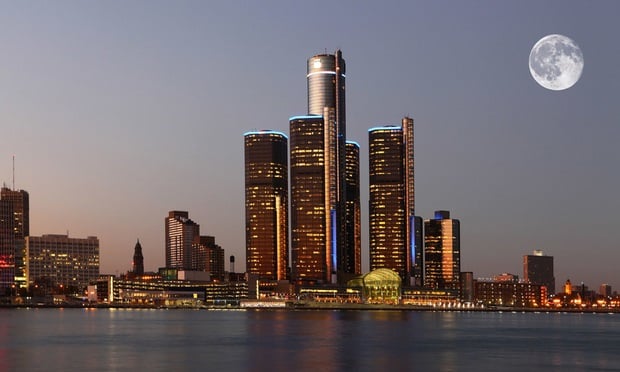She says the state auditor general has declined to conduct a performance review of the program.
In the study, Katz details the failures of the brownfield allotment ofCMI, the largest portion of the initiative. She says the goal of the state-funded cleanups of 162 brownfield throughout the state is to curb suburban "sprawl" by increasing the availability of unsoiled and unencumbered urban properties.
"State planners hope that once investment is redirected, cities will be revitalized, bringing a halt to further development of farmlands and forestlands," Katz says. "Our research indicates that this expectation isunrealistic."
Instead, reality shows that just cleaning up a site will not make it ready for redevelopment, she says. To illustrate, Katz provides data on the various CMI brownfield projects.
Of the 55 sites completed by the Department of Environmental Quality, six in 1999 were rated as having "excellent" redevelopment prospects, Katz reports.
However, none of those six have been sold or transferred by a municipality to a private investor, or been redeveloped, she notes.
Also, 12 of the 1999 "good" projects are considered complete, Katz adds.
"One site now serves as a public parking lot, and a second site isprivately owned. No private investment or redevelopment has occurred in the remaining 10 parcels," she notes.
Part of the problem is that the MDEQ assigned those designations without regard to their redevelopment potential, Katz says.
"In the case of CMI, the lack of redevelopment to date raises seriousquestions about whether brownfield cleanups alone can revitalize urbanareas as intended. To the extent these program goals are unrealistic, initiative priorities will be skewed," Katz says.
Most people in Michigan say urban sprawl is a problem, she says. However, people and businesses are still moving from the cities into the suburbs, despite efforts to rebuild urban areas.
Katz does give credit to efforts by Gov. John Engler to lower responsibility by purchasers of contaminated sites. Companies that took on brownfield redevelopment have had moderate success, she adds.
Bottom line, state officials need to realize that even with state-provided cleanup dollars, a bad property is still a bad property, Katz says.
"Based on the fact that myriad factors dissuade urban reinvestment and make suburban development desirable, our findings indicate that the stated objectives of the brownfield cleanup program are both unrealistic and unrealized," she says.
Want to continue reading?
Become a Free ALM Digital Reader.
Once you are an ALM Digital Member, you’ll receive:
- Breaking commercial real estate news and analysis, on-site and via our newsletters and custom alerts
- Educational webcasts, white papers, and ebooks from industry thought leaders
- Critical coverage of the property casualty insurance and financial advisory markets on our other ALM sites, PropertyCasualty360 and ThinkAdvisor
Already have an account? Sign In Now
*May exclude premium content© 2025 ALM Global, LLC, All Rights Reserved. Request academic re-use from www.copyright.com. All other uses, submit a request to [email protected]. For more information visit Asset & Logo Licensing.







